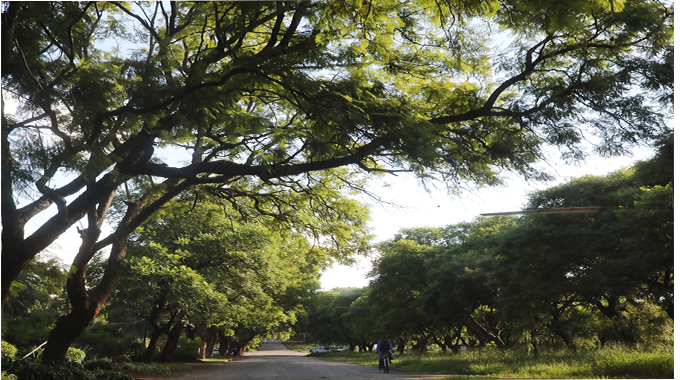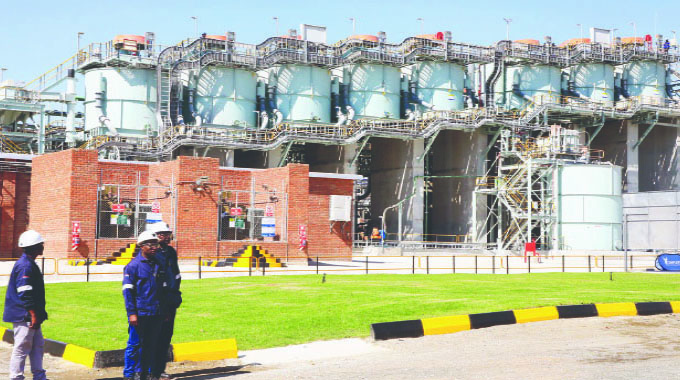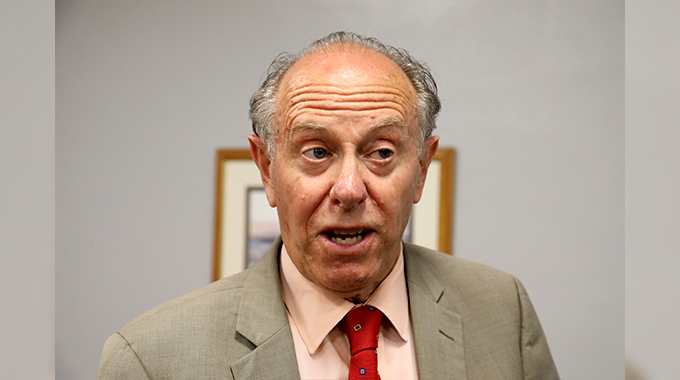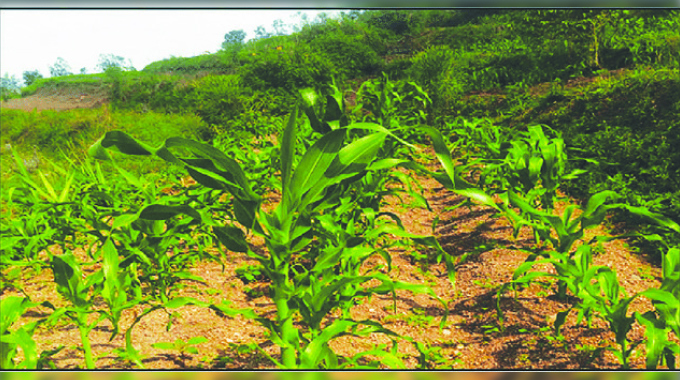Party away as forests die…Care-free revellers and leisure spots as drivers of deforestation in Midlands

Patrick Chitumba, [email protected]
IT is a hive of activity at a popular leisure spot in Gweru on a Saturday afternoon, as merry makers wind down and enjoy their hard-earned cash.
As they sip on a variety of beverages, there is also isitshwala, rice, chicken, beef, pork and sausages in pots and on the braai stand.
Several times, thick smoke bellows from the braai stands as employees at this joint turn the meat time and again, until they are satisfied that it is well grilled.
Amid the pomp and fanfare is the use of firewood that is being used to cook and braai meat varieties.
There are logs cut from trees somewhere in the outskirts of Gweru including Chiwundura and Ngamo areas.
However, these merrymakers do not care where the firewood is coming from as all they want is to eat, drink and dance.
“I love coming to this place as I’m assured of a good fire for braai because when I drink, I love to chew some meat. So the issue of deforestation at the moment is neither here nor there. This firewood was delivered from somewhere and it’s the job of the police and Forestry Commission to put in place mechanisms to curb wood poaching,” said Mr Tinashe Chikwata, a reveller at the joint.
Last year, the Forestry Commission in the Midlands Province had a blitz targeting leisure spots and tonnes of firewood were confiscated.
The Forestry Commission noted that between 1990 and 2000, Zimbabwe lost an average of 312 900 hectares of forest per year.
This amounts to an average annual deforestation rate of 1,41 percent.
Between 2000 and 2005, the rate of forest change increased by 16,4 percent to 1,64 percent per annum.
This loss of biodiversity can compromise the contributions of indigenous forests to climate change mitigation through carbon sequestration affecting carbon and nitrogen cycles and livelihood sustainability.
Quantitative national-level information on drivers and activities causing deforestation and forest degradation in Zimbabwe is generally unknown.
The United Nations Framework Convention on Climate Change encourages developing countries to identify land use, land use change and forestry activities, that are linked to the drivers of deforestation and forest degradation and to assess their potential contribution to the mitigation of climate change.
The identification and assessment of drivers of deforestation and land degradation at the national level are also complementary to REDD+ related estimation and reporting using the Inter-governmental Panel on Climate Change (IPCC) Good Practice Guidance.
Understanding these drivers is essential in the development of policies and measures that aim to change current trends in forest activities toward a more climate and biodiversity-friendly outcome for the nation.
Deforestation and forest degradation hotspots are found to be common in all provinces, mainly the rural, resettlement and peri-urban areas.
The direct drivers of deforestation include firewood, settlements, agriculture, wildfire, tobacco curing, charcoal, brick making, logging, overstocking, construction, mining and brushwood.
The indirect drivers include socio-economic factors, legal factors, tenure, climate change/environmental factors and politics.
Settlement expansion, agriculture, mining and tobacco curing were the most common drivers of deforestation and forest degradation and the most difficult to address.
Mining and agriculture are likely to remain important in the future because both are economic pillars of the country.
Environmental Management Agency (EMA) Midlands province spokesperson Mr Timothy Nyoka said there are areas such as Chiwundura on the outskirts of Gweru experiencing deforestation because of wanton cutting down of trees.
“There used to be thick forests in the Chiwundura area but they are all gone now. If you look in the Chiwundura direction from some points in Gweru, you can see structures popping from Chiwundura and that shows the extent of deforestation. You find that most of the trees from that area were burnt out at braai stands at these leisure spots,” he said.
Mr Nyoka said there is a need for concerted efforts involving the Government and other partners to mitigate against the effects of deforestation which has an impact on climate change.
He applauded efforts by a non-governmental organisation, 4-H Zimbabwe Foundation, which has come up with a project that will see the planting of over 10 000 trees by March next year.
The Foundation recently launched a project dubbed, “Enhancing livelihoods through water-women-food nexus interventions”, that will be implemented in eight wards in the Chiwundura area.
In addition to over 10 000 trees being planted, 40 extension officers will be equipped with tablets for them to work on smart agriculture programmes with villagers to ensure food security and nutrition.
“Some years back, we had siltation at Kwekwe River because of stream bank cultivation. When we have a serious drought, people and livestock depend on the river.
“The 4-H Zimbabwe programme is aimed at reducing deforestation and that will result in the reduction of siltation of our water resources,” said Mr Nyoka.
He called on villagers to reduce planting in waterways and wetlands.
“This causes siltation of dams and rivers so let us work together and achieve sustainable development in line with the National Development Strategy 1 food and nutrition cluster. 20 000 trees are to be planted in Chiwundura which is a huge development because there were no more trees and we’re glad to be doing the reforestation programme,” he said.
Climate change expert Mr Peter Makwanya said studies show that the use of firewood in urban areas is a more imminent environmental concern than its use in rural areas.
“Rural households don’t cut down whole trees and often collect dead wood which has a less intense environmental impact than urban firewood harvesting, which is concentrated on specific areas to reduce transport costs and involves cutting whole, live trees,” he said.
Mr Makwanya said it was common cause that high demand for firewood in Zimbabwe’s urban areas is causing deforestation and land degradation in other parts of the country — despite sustainability goals set forth in a United Nations Development Programme report pledging to curb deforestation by the end of 2015.
It is now 2024 and deforestation is still taking place at an alarming rate across the country.
“Lack of enforcement of policy by-laws has nurtured this kind of self-destructive behaviour that has gone on for some time without offenders being punished. Lack of proper and empowering environmental literacy, education and awareness of climate change and environment stewardship best practices has contributed to the current state of affairs,” said Mr Makwanya.
Environment patron and First Lady Dr Auxillia Mnangagwa recently challenged Zimbabweans to embrace a culture of tree planting to replenish and expand forests that she said are a key natural resource instrumental in helping the country to become an upper-middle-income economy by 2030.
The First Lady said the restoration and preservation of forests augured well with Zimbabwe’s plans to adopt a green economy, joining other progressive nations across the globe that have adopted eco-friendly policies to mitigate the effects of climate change.
Zimbabwe is Party to the United Nations Framework Convention on Climate Change since 1992 which aims to stabilise greenhouse gas (GHG) concentrations in the atmosphere at a level that would prevent dangerous anthropogenic interference with the climate system.
The Kyoto Protocol of 2007 gave birth to Reduced emissions from deforestation and forest degradation (REDD) which was transformed into REDD-plus in December 2008.
The Paris Agreement of 2015 led to a new international climate agreement applicable to all countries and aims to keep global warming below 2 degrees Celsius following the recommendations of the Inter-governmental Panel on Climate Change.










Comments